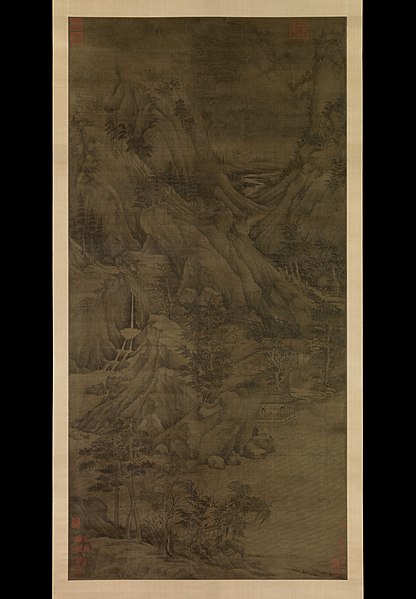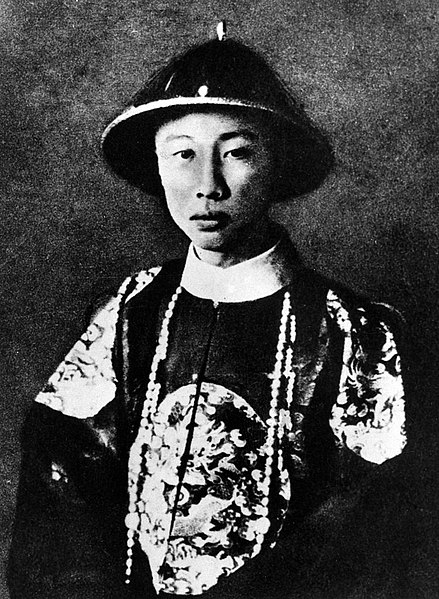Five Dynasties and Ten Kingdoms period
The Five Dynasties and Ten Kingdoms period was an era of political upheaval and division in Imperial China from 907 to 979. Five dynastic states quickly succeeded one another in the Central Plain, and more than a dozen concurrent dynastic states, collectively known as the Ten Kingdoms, were established elsewhere, mainly in South China. It was a prolonged period of multiple political divisions in Chinese imperial history.
Palace Banquet by Anonymous, Five Dynasties and Ten Kingdoms period
Riverbank by Dong Yuan (932–962)
Summer Palace of Emperor Ming (明皇避暑宮) by Guo Zhongshu (929–977)
The Yueyang Tower by Li Sheng (fl. 908–925)
For most of its history, China was organized into various dynastic states under the rule of hereditary monarchs. Beginning with the establishment of dynastic rule by Yu the Great c. 2070 BC, and ending with the abdication of the Xuantong Emperor in AD 1912, Chinese historiography came to organize itself around the succession of monarchical dynasties. Besides those established by the dominant Han ethnic group or its spiritual Huaxia predecessors, dynasties throughout Chinese history were also founded by non-Han peoples.
A depiction of Yu, the initiator of dynastic rule in China, by the Southern Song court painter Ma Lin.
A photograph of the Xuantong Emperor, widely considered to be the last legitimate monarch of China, taken in AD 1922.
Image: Han Guangwu Di
Image: Liu Bei Tang








